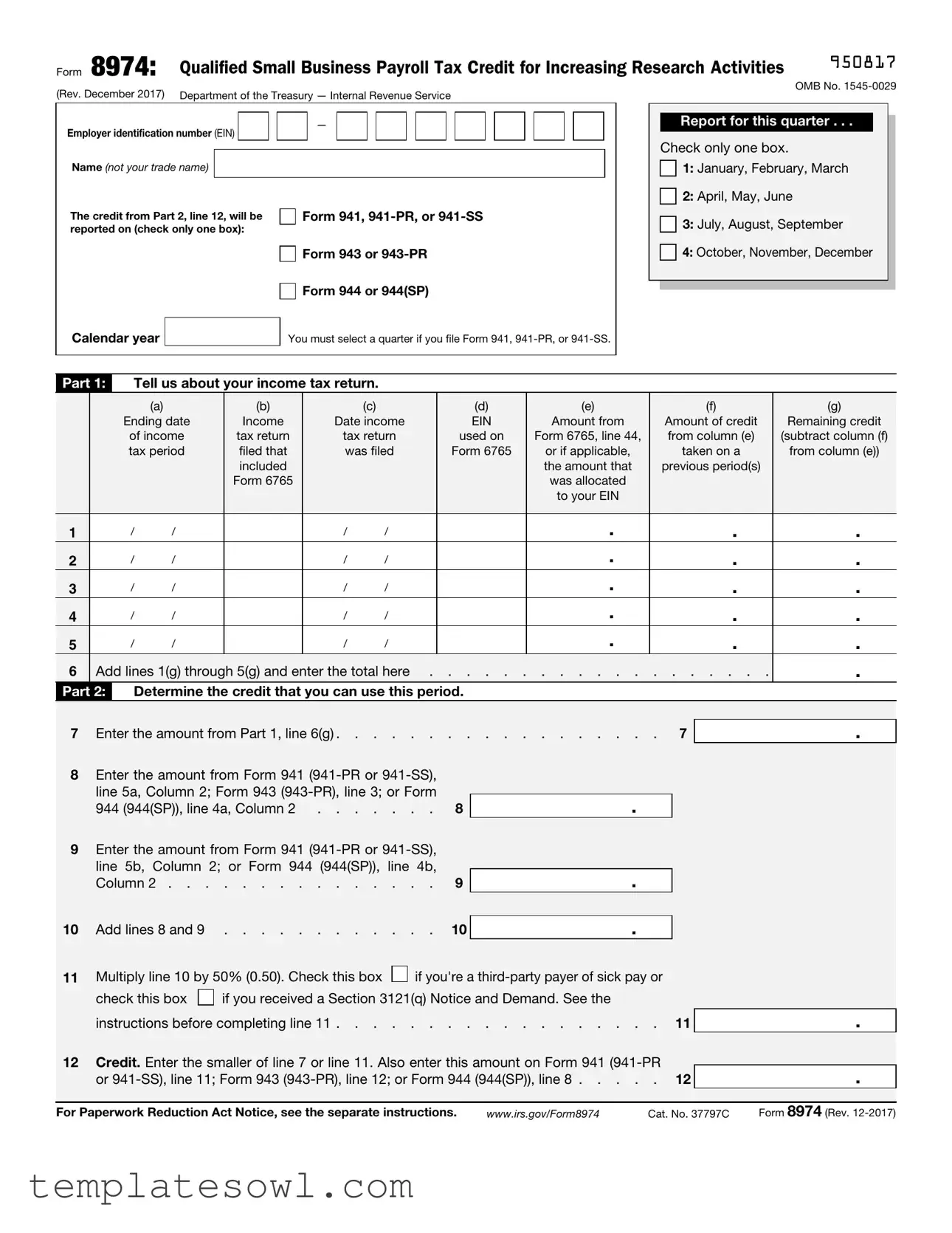When filling out Form 8974, several common mistakes can lead to delays or rejections. One frequent error is failing to select the appropriate quarter for the report. Each taxpayer must check only one box corresponding to the quarter in which the credit is claimed. Without this step, the form cannot be processed correctly.
Another mistake involves inaccuracies in reporting the Employer Identification Number (EIN). This number must be valid and match the one on the taxpayer's income tax return. Errors in the EIN can cause confusion and may impede the review process.
Many individuals neglect to verify the ending date of their income tax return. The date must align with the tax period being claimed. Incorrect dates can lead to discrepancies that complicate the credit allocation process.
Completing Part 1 incorrectly is a common issue. Taxpayers must provide detailed information about their income tax return, including the amounts from Form 6765. Skipping or miscalculating these amounts results in incomplete or inaccurate information that can derail the claim.
A major pitfall lies in misunderstanding how to determine the credit for the period. Taxpayers must diligently follow the instructions to correctly calculate credits from prior periods. Mistakes in this calculation can lead to overestimations or underestimations of the credit being claimed.
Some applicants overlook the importance of checking the boxes relevant to their tax scenario. For example, if a third-party payer of sick pay applies, this box must be checked. Ignoring such indicators may lead to processing complications or disqualification from the tax credit.
Furthermore, individuals often enter the wrong figures for lines 8 and 9, which are critical to calculating the total credit accurately. Entering figures from the wrong tax forms can significantly alter the outcome, leading to problems in the credit calculation.
Failing to double-check the final credit amount before submission is a mistake that can be easily avoided. Individuals need to ensure that line 12, which states the smaller of line 7 or line 11, is accurate. This is the amount that will be entered on other relevant forms, and any error here could result in funding discrepancies.
Lastly, not reviewing the instructions provided by the IRS is a fundamental oversight. These instructions contain essential guidance that can prevent many of the mistakes mentioned. Taking the time to understand the requirements can minimize errors and ensure a smoother filing process.




 if you're a
if you're a 
 if you received a Section 3121(q) Notice and Demand. See the
if you received a Section 3121(q) Notice and Demand. See the